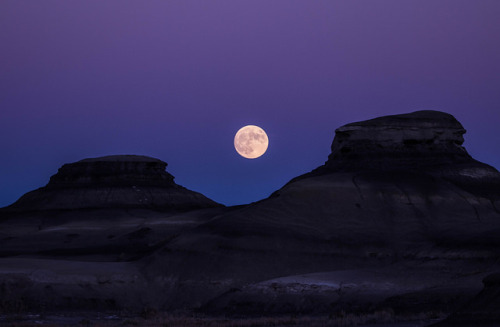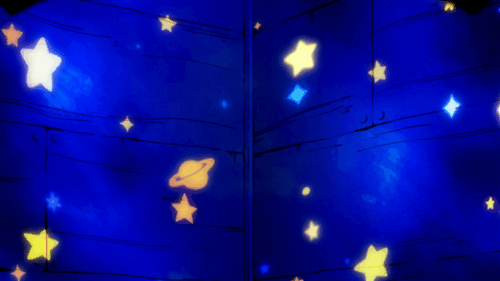Darkstarward - ✦✧✦

More Posts from Darkstarward and Others


2018 August 24
Messier 20 and 21 Image Credit & Copyright: Ignacio Diaz Bobillo
Explanation: The beautiful Trifid Nebula, also known as Messier 20, is easy to find with a small telescope in the nebula rich constellation Sagittarius. About 5,000 light-years away, the colorful study in cosmic contrasts shares this well-composed, nearly 1 degree wide field with open star cluster Messier 21 (bottom right). Trisected by dust lanes the Trifid itself is about 40 light-years across and a mere 300,000 years old. That makes it one of the youngest star forming regions in our sky, with newborn and embryonic stars embedded in its natal dust and gas clouds. Estimates of the distance to open star cluster M21 are similar to M20’s, but though they share this gorgeous telescopic skyscape there is no apparent connection between the two. In fact, M21’s stars are much older, about 8 million years old.
∞ Source: apod.nasa.gov/apod/ap180824.html

Fantasy World by Jonatan Pie

![NGC 6729 [Star Forming Region]](https://64.media.tumblr.com/7df5e1cc7bcae11fd0089056531e0384/tumblr_pdt0dmegak1vhj0upo1_500.jpg)
NGC 6729 [Star Forming Region]








🌙



The Lunar X : The striking X in this lunarscape is easily visible in binoculars or a small telescope, but not too many have seen it. The catch is, this lunar X is fleeting and only apparent in the hours before the Moon’s first quarter phase. Along the shadow line between lunar day and night, the X illusion is produced by a configuration of craters seen here toward the left, Blanchinus, La Caille and Purbach. Near the Moon’s first quarter phase, an astronaut standing close to the craters’ position would see the slowly rising Sun very near the horizon. Temporarily, crater walls would be in sunlight while crater floors would still be in darkness. Seen from planet Earth, contrasting sections of bright walls against the dark floors by chance look remarkably like an X. This sharp image of the Lunar X was captured on February 22nd. For extra credit, sweep your gaze along the lunar terminator and you can also spot the Lunar V. via NASA
-
 photographingeverythingnearme reblogged this · 3 weeks ago
photographingeverythingnearme reblogged this · 3 weeks ago -
 minusculelobotomy reblogged this · 4 weeks ago
minusculelobotomy reblogged this · 4 weeks ago -
 tasting-sweet reblogged this · 4 weeks ago
tasting-sweet reblogged this · 4 weeks ago -
 they-be-queer reblogged this · 4 weeks ago
they-be-queer reblogged this · 4 weeks ago -
 underproved-overbaked liked this · 1 month ago
underproved-overbaked liked this · 1 month ago -
 southcalifa reblogged this · 1 month ago
southcalifa reblogged this · 1 month ago -
 smilylips reblogged this · 1 month ago
smilylips reblogged this · 1 month ago -
 telescopi0 liked this · 1 month ago
telescopi0 liked this · 1 month ago -
 entrevenus reblogged this · 1 month ago
entrevenus reblogged this · 1 month ago -
 minusculelobotomy liked this · 1 month ago
minusculelobotomy liked this · 1 month ago -
 hipermnesia liked this · 1 month ago
hipermnesia liked this · 1 month ago -
 crehate reblogged this · 1 month ago
crehate reblogged this · 1 month ago -
 peace-under-the-moonlight liked this · 1 month ago
peace-under-the-moonlight liked this · 1 month ago -
 forrestfloor reblogged this · 1 month ago
forrestfloor reblogged this · 1 month ago -
 bibss reblogged this · 1 month ago
bibss reblogged this · 1 month ago -
 sereinxx reblogged this · 1 month ago
sereinxx reblogged this · 1 month ago -
 helluvatrash reblogged this · 1 month ago
helluvatrash reblogged this · 1 month ago -
 tear-downthestars reblogged this · 1 month ago
tear-downthestars reblogged this · 1 month ago -
 tear-downthestars liked this · 1 month ago
tear-downthestars liked this · 1 month ago -
 macd1000 liked this · 1 month ago
macd1000 liked this · 1 month ago -
 aforyouu reblogged this · 1 month ago
aforyouu reblogged this · 1 month ago -
 juhnk reblogged this · 1 month ago
juhnk reblogged this · 1 month ago -
 highsensitivebitch liked this · 1 month ago
highsensitivebitch liked this · 1 month ago -
 tonallypurple reblogged this · 1 month ago
tonallypurple reblogged this · 1 month ago -
 delostenor reblogged this · 1 month ago
delostenor reblogged this · 1 month ago -
 rebelmovement liked this · 1 month ago
rebelmovement liked this · 1 month ago -
 riveroflonging liked this · 1 month ago
riveroflonging liked this · 1 month ago -
 ricorditempestosi liked this · 1 month ago
ricorditempestosi liked this · 1 month ago -
 hatin reblogged this · 1 month ago
hatin reblogged this · 1 month ago -
 clareando-a-aduana reblogged this · 1 month ago
clareando-a-aduana reblogged this · 1 month ago -
 terrencecosby reblogged this · 1 month ago
terrencecosby reblogged this · 1 month ago -
 overkissed reblogged this · 1 month ago
overkissed reblogged this · 1 month ago -
 ziggy-solarecreator liked this · 1 month ago
ziggy-solarecreator liked this · 1 month ago -
 jinxxpal reblogged this · 1 month ago
jinxxpal reblogged this · 1 month ago -
 sissypageishere liked this · 1 month ago
sissypageishere liked this · 1 month ago -
 wolf-54 liked this · 1 month ago
wolf-54 liked this · 1 month ago -
 confessionalbaal reblogged this · 2 months ago
confessionalbaal reblogged this · 2 months ago -
 e-laboy reblogged this · 2 months ago
e-laboy reblogged this · 2 months ago -
 nubare liked this · 2 months ago
nubare liked this · 2 months ago -
 666symbiosis reblogged this · 2 months ago
666symbiosis reblogged this · 2 months ago -
 hyperphonic reblogged this · 2 months ago
hyperphonic reblogged this · 2 months ago -
 diioniisos reblogged this · 2 months ago
diioniisos reblogged this · 2 months ago -
 praisethemgains reblogged this · 2 months ago
praisethemgains reblogged this · 2 months ago -
 unaliveish reblogged this · 2 months ago
unaliveish reblogged this · 2 months ago -
 lumyaa liked this · 2 months ago
lumyaa liked this · 2 months ago -
 outlawry182 reblogged this · 2 months ago
outlawry182 reblogged this · 2 months ago -
 dragononymous liked this · 2 months ago
dragononymous liked this · 2 months ago -
 myboardforastetyks reblogged this · 2 months ago
myboardforastetyks reblogged this · 2 months ago -
 franciscadoesntlivehere reblogged this · 3 months ago
franciscadoesntlivehere reblogged this · 3 months ago
